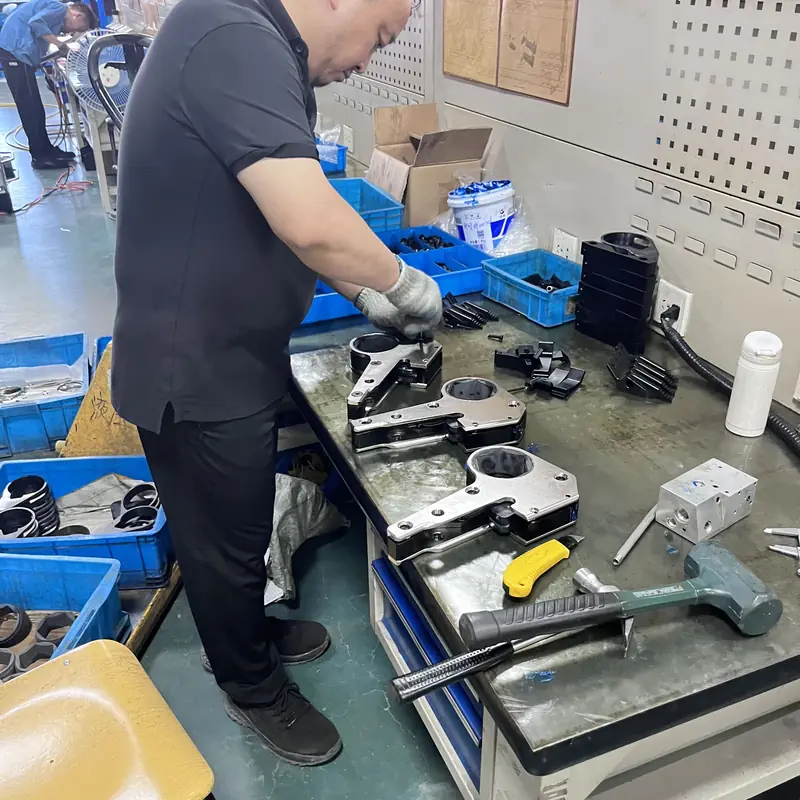How to operate a high power hydraulic torque wrench?
Author:
saivs
Time:2025-01-23 Tag: Hydraulic torque wrench Suppliers Hydraulic torque wrench Hydraulic torque wrench Customized Square Drive Hydraulic Torque Wrench Low Profile Hydraulic Torque Wrench hydraulic bolt torquing machine
Operating a high-power Hydraulic Torque Wrench involves several steps,
and it's essential to follow safety protocols to ensure efficient and safe operation. Here's a basic guide:

1. Pre-Operation Checks
- Inspect the Equipment: Ensure the hydraulic Torque Wrench, hydraulic pump, hoses, and accessories are in good condition and free from damage.
- Check Hydraulic Fluid: Make sure the hydraulic fluid level in the pump is adequate, and the fluid is clean and free of contaminants.
- Verify Connections: Check that all hydraulic hoses are securely connected to the wrench and pump. Tighten any loose fittings.
- Torque Settings: Set the desired torque value according to the specifications of the job. This can usually be adjusted on the wrench or the control unit connected to the pump.
2. Setup and Positioning
- Attach the Wrench to the Fastener: Secure the hydraulic torque wrench to the bolt or fastener you want to tighten or loosen. Ensure that the wrench is properly aligned with the fastener to avoid misalignment during operation.
- Position the Hydraulic Pump: Position the hydraulic pump close enough to the work area so that the hoses can reach without tension, but far enough to avoid any obstruction or safety hazards.
3. Operation
- Activate the Hydraulic Pump: Start the hydraulic pump to begin applying pressure to the hydraulic torque wrench. Some hydraulic torque wrenches have a trigger or button on the pump, while others may require a manual valve to control the pressure.
- Monitor Torque: As the wrench applies torque to the fastener, keep an eye on the pressure gauge (if available) or digital readout to ensure the wrench is delivering the correct torque.
- Torque Monitoring: Some high-power hydraulic torque wrenches have an automatic shut-off feature that will stop once the preset torque is reached. If your wrench doesn't have this feature, manually stop once the target torque is achieved.
- Verify Tightening Sequence: If tightening multiple fasteners (like in flange assembly), follow the correct tightening sequence (e.g., star or crisscross pattern) to ensure even load distribution.
4. Post-Operation
- Turn Off the Pump: Once the required torque has been applied, turn off the hydraulic pump to relieve pressure.
- Remove the Wrench: Disconnect the wrench from the fastener and hydraulic hoses, ensuring to relieve any residual pressure before disconnecting.
- Store Equipment Properly: After use, store the torque wrench and pump in a safe, clean, and dry environment to prevent damage.
5. Safety Precautions
- Always wear appropriate personal protective equipment (PPE), including gloves, safety glasses, and hearing protection.
- Be cautious of high-pressure hydraulic lines, as they can cause serious injury if they rupture or disconnect.
- Keep the work area clean and free from obstructions to prevent tripping hazards.
- Always follow the manufacturer's manual for specific instructions, as torque wrenches may have unique features or requirements.
By following these steps, you should be able to safely and efficiently operate a high-power hydraulic torque wrench for your applications.
Why Choose SAIVS™ as Your Supplier?
With 20 years of industry experience, SAIVS is a leading Chinese manufacturer of high-quality tools, offering competitive pricing and excellent customer service.We pride ourselves on exceptional quality control, extensive experience, and comprehensive after-sales service.